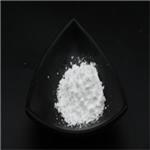Retatrutide: A Novel Synthetic Peptide with Triple Agonist Activity for Obesity
General Description
Retatrutide is a synthetic peptide comprising 39 amino acids that acts as a triple agonist for the glucagon receptor, glucagon-like peptide-1 receptor, and gastric inhibitory polypeptide receptor. Retatrutide shows promise as a treatment for obesity, type 2 diabetes, and non-alcoholic fatty liver disease due to its ability to regulate appetite and enhance insulin secretion while suppressing glucagon production. With a pharmacokinetic half-life of approximately six days, retatrutide is administered subcutaneously once a week. Ongoing clinical studies highlight its efficacy in improving glucose management and insulin sensitivity, potentially transforming metabolic disease treatments.

Figure 1. Retatrutide
Overview
Obesity is a major risk factor for cardiovascular disease, diabetes, osteoarthritis, and some cancers. Retatrutide stimulates Glucagon-like peptide 1 (GLP-1), Glucose-dependent insulinotropic polypeptide (GIP) receptors, and glucagon receptors, and is being developed for the treatment of obesity and type 2 diabetes.
A phase 2 clinical trial of retatrutide (LY3437943) in the treatment of obesity. The primary end point was percentage change in weight from baseline to 24 weeks, which ranged from −7.2% to -~18% as the dose of retatrutide increased from 1 mg to 12 mg. The most frequent adverse events were gastrointestinal (nausea, diarrhea, vomiting).
The results for retatrutide in phase 2 for obesity (and diabetes) are mostly encouraging. Consistent with being a GLP-1 receptor agonist, heart rate was increased by up to 6.7 beats/min by retatrutide, which may be detrimental and offset some of the benefits of weight loss.1
Therapeutic Potential for Obesity
Retatrutide holds promise as a future therapeutic option for obesity, leveraging its ability to target three receptor pathways that regulate hunger. The glucagon receptor, the gastric inhibitory polypeptide receptor, and the glucagon-like peptide-1 receptor are central to the body’s hunger signals and glucose metabolism. After meals, the stomach releases glucose-dependent insulinotropic polypeptide, which in turn stimulates pancreatic beta cells to release insulin. This process is complemented by the action of glucagon, which maintains plasma glucose levels by promoting glucose production in the liver. Given its multifaceted approach to appetite regulation and glucose homeostasis, retatrutide is poised as a novel treatment for conditions like obesity, type 2 diabetes mellitus, and non-alcoholic fatty liver disease. Its formulation allows for subcutaneous administration once a week, owing to a pharmacokinetic half-life of approximately six days that supports sustained effects on the body’s metabolism. 2
Mechanism of Action
The mechanism of action of retatrutide is centered around its role as a glucagon-like peptide-1 receptor agonist. By mimicking the physiological effects of the GLP-1 hormone, retatrutide enhances insulin secretion while simultaneously suppressing glucagon production, leading to lower blood glucose levels. This action is crucial for maintaining metabolic balance, particularly for individuals suffering from insulin resistance or type 2 diabetes. Moreover, retatrutide influences the hypothalamic centers that regulate hunger, delaying gastric emptying and thereby reducing appetite. These actions not only contribute to decreased caloric intake and weight loss but also could explain some common side effects associated with GLP-1 receptor agonists, such as nausea and gastrointestinal discomfort. While the full breadth of retatrutide’s mechanisms remains to be fully elucidated, its dual effects on appetite and glycemic control mark it as a significant player in the management of metabolic disorders. 2
Clinical Efficacy
Extensive clinical studies have evaluated the efficacy of retatrutide in various metabolic conditions. Research indicates that retatrutide is significantly more effective at activating the human gastric inhibitory polypeptide receptor compared to natural hormones acting on both the glucagon and GLP-1 receptors. This higher efficacy suggests that retatrutide not only presents a novel approach to obesity treatment but also enhances insulin sensitivity and glucose management in patients with type 2 diabetes. As retatrutide progresses through clinical trials, its unique pharmacological profile and extended half-life position it as a promising candidate for broader therapeutic applications. With continued investigation into its long-term effects and safety profiles, retatrutide may redefine current treatment standards for obesity and associated metabolic diseases, providing an essential tool in the clinical management of these conditions. 2
References:
[1] DOGGRELL S A. Retatrutide showing promise in obesity (and type 2 diabetes).[J]. Expert opinion on investigational drugs, 2023. DOI:10.1080/13543784.2023.2283020.[2] KAUR M, MISRA S. A review of an investigational drug retatrutide, a novel triple agonist agent for the treatment of obesity[J]. European Journal of Clinical Pharmacology, 2024, 20 1: 115-122. DOI:10.1007/s00228-024-03646-0.

US $5.00-0.50/Gram2025-11-18
- CAS:
- 2381089-83-2
- Min. Order:
- 1Gram
- Purity:
- 99% hplc
- Supply Ability:
- 500TONS

US $70.00/box2025-11-07
- CAS:
- 2381089-83-2
- Min. Order:
- 1box
- Purity:
- 99
- Supply Ability:
- 777


